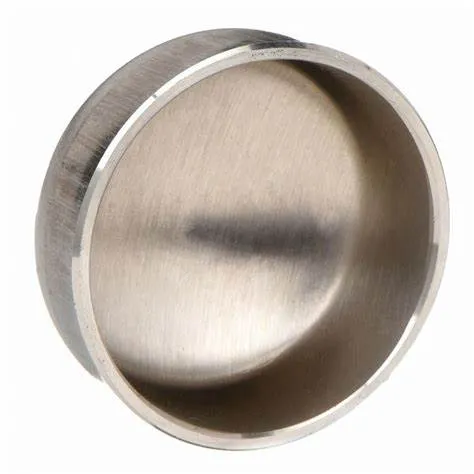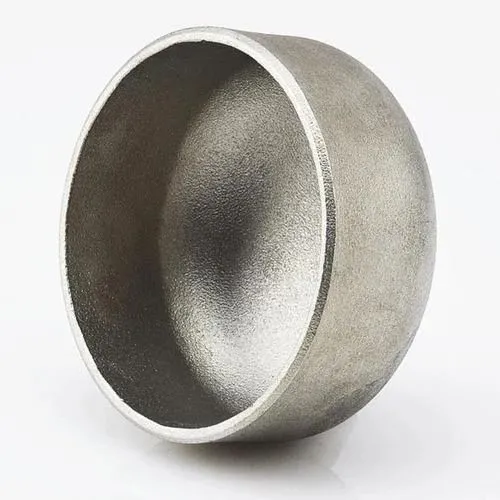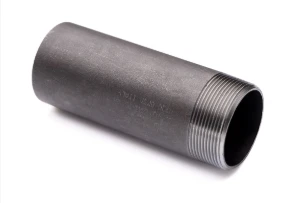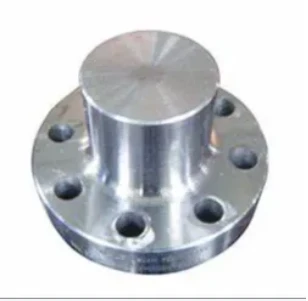JIS B2311 je japonský priemyselný štandard, ktorý sa vzťahuje na potrubné tvarovky na zváranie na tupo vrátane uzáverov používaných v potrubných systémoch. Čiapky na zváranie na tupo slúžia na uzavretie konca potrubia a poskytujú tesnenie, aby sa zabránilo úniku alebo kontaminácii. Tu je úvod k čiapkam na zváranie na tupo JIS B2311:
- 1. JIS B2311 Standard:
- - Norma JIS B2311 špecifikuje požiadavky na konštrukciu, rozmery, materiály, výrobu a skúšanie tvaroviek na zváranie na tupo, vrátane uzáverov, v potrubných systémoch.
- - Norma zabezpečuje, že uzávery vyrobené v súlade s normami JIS spĺňajú normy kvality a sú kompatibilné s ostatnými komponentmi potrubia.
- 2. Čiapka na zváranie na tupo:
- - Kryt na zváranie na tupo podľa JIS B2311 je tvarovka určená na bezpečné zakrytie a utesnenie konca potrubia, čím poskytuje ochranu a zachováva integritu potrubného systému.
- - Uzávery sa používajú v situáciách, keď koniec potrubia vyžaduje uzavretie, či už natrvalo alebo dočasne, aby sa zabránilo úniku, kontaminácii alebo aby sa zabezpečila konečná úprava systému.
- 3. Materiál a konštrukcia:
- - Čiapky na zváranie na tupo podľa špecifikácií JIS B2311 sú k dispozícii v rôznych materiáloch, ako je uhlíková oceľ, nehrdzavejúca oceľ a legovaná oceľ, aby vyhovovali rôznym aplikačným požiadavkám.
- - Tieto uzávery sa vyrábajú štandardizovanými konštrukčnými metódami, aby sa zabezpečilo pevné a tesné spojenie pri zváraní na koniec potrubia.
- 4. Aplikácia a výhody:
- - Čiapočky na zváranie na tupo nachádzajú uplatnenie v rôznych priemyselných odvetviach vrátane ropného a plynárenského priemyslu, chemických procesov, úpravní vody a ďalších, kde je potrebné bezpečne uzavrieť koncovky potrubí.
- - Uzávery poskytujú ochranu koncov rúr pred prvkami prostredia, zabraňujú kontaminácii a pomáhajú udržiavať čistotu a integritu potrubného systému.
- 5. Inštalácia a zváranie:
- - Správne inštalačné postupy, vrátane správneho zarovnania, prípravy konca rúry a zváracích techník, sú nevyhnutné pri inštalácii uzáverov na zváranie na tupo, aby sa zabezpečilo tesné a nepriepustné tesnenie.
- - Zváranie je bežnou metódou na pripevnenie uzáverov na potrubia, čím sa zabezpečí bezpečné a trvalé uzatvorenie, ktoré vydrží tlak, zmeny teploty a prúdenie tekutiny v systéme.
- Stručne povedané, uzávery na zváranie na tupo JIS B2311 sú kľúčovými komponentmi používanými v potrubných systémoch na bezpečné utesnenie a ochranu koncov rúr. Tieto uzávery vyhovujú štandardizovaným požiadavkám na zabezpečenie kvality, spoľahlivosti a kompatibility v priemyselných aplikáciách, kde je nutný uzáver a ochrana potrubia.
What Is a Butt Welding Cap and How Is It Used in Industrial Piping?
In industrial piping systems, end-of-line sealing and branch closures require robust solutions. A butt welding cap serves as a critical component for terminating pipes securely. By providing a seamless, welded closure, this fitting maintains system integrity, prevents leaks, and supports compliance with industry standards.
What Is a Butt Welding Cap?
A butt welding cap—also called a pipe end cap or buttweld end cap—is a round fitting designed to close off the end of a pipe. It’s manufactured to match the pipe’s outer diameter and schedule, with either a hemispherical or flat face. To install, both the pipe end and cap are beveled to form a V‑groove, enabling full‑penetration, fusion welds. Common materials include carbon steel, stainless steel, nickel alloys, and other engineered grades, chosen to satisfy pressure, temperature, and corrosion‑resistance requirements.
How Is Butt Welding Cap Used in Industrial Piping?
Butt welding caps find application across oil & gas, petrochemical, power generation, water treatment, and general process industries for both permanent and temporary closures. During hydrostatic testing, technicians install caps to seal off sections of piping while monitoring for leaks. In new construction or retrofit projects, caps terminate branch lines, future tie‑in spools, or dead‑end mains until system expansion. Welders prepare each joint by cleaning and beveling surfaces, aligning the cap precisely, and executing a root pass followed by filler passes per the qualified Welding Procedure Specification (WPS). Post‑weld heat treatment and non‑destructive examination (NDE)—such as radiography or ultrasonic testing—verify weld integrity and compliance with ASME B16.9 and related standards. Additionally, temporary caps enable safe isolation during maintenance, allowing for segment testing and dewatering under regulatory protocols.
Benefits and Best Practices
Butt welding caps offer a smooth‑bore transition that minimizes flow disruption and stress concentration. Their full‑penetration welds deliver exceptional structural strength and leak resistance. To optimize performance, engineers should:
Select caps with matching material grades and wall thicknesses
Adhere to proper bevel angles and joint fit‑up tolerances
Follow qualified WPS protocols rigorously
Consider cladding or protective coatings in corrosive environments to extend service life
Regular inspection and thorough documentation ensure long‑term reliability and safe operation under demanding conditions.
Butt welding caps are indispensable components for achieving durable, leak‑proof pipe terminations in a wide range of industrial applications.
Butt Welding Cap FAQs
What is a butt welding cap?
|
What materials are commonly used?
|
What standards govern butt welding caps?
|
How are butt welding caps installed?
|
Where are butt welding caps typically used?
|
What are the advantages of threaded caps?
|
















